Greetings and welcome to everybody's favorite tree
identification game: "Name! That! Tree!"
But first, the fine print!
I used leaves/leaf shapes to identify these trees, if you are
hunting this cache after the leaves have fallen it will be
significantly more difficult to identify the trees and the
pictures provided in the Tree Identification Guide on this page
will be of little use. If you are not a tree guru, I would suggest
waiting until the leaves return in the spring or research
identifying trees based on bark or some other non-leaf means. The
producers debated marking this cache with the 'Not Available in
Winter' attribute, but technically it still should be possible.
Bump this up to a difficulty of 5 (special equipment required -
arborist  ) if hunting when trees have no
leaves.
) if hunting when trees have no
leaves.
As the next contestant you will be visiting 6 different
waypoints along a trail in Conway Robinson Memorial State Forest
and attempt to identify a tree at each location. The course will
send you on a well defined trail, with the trail head to the right
side of the parking area - located at Tree A. Expect a 1.5 to 2
mile round trip hike, although you could easily return to the loop
trail from the final location and continue around to see the rest
of Conway Robinson. The six tree waypoints are along the path, the
final location is a bit off the beaten path.
Of course, in the middle of a forest it would be difficult to
determine the exact tree to identify, but our lovely producers have
thought of everything and chosen trees with identifiable markings
detailed in the waypoint descriptions. Once you arrive at each
waypoint, you must read the description for that tree to determine
which specific tree to identify, and then pick it out of the list
under the Tree Identification Guide below.
Armed only with the information (and pictures) on this cache
page, you most likely stand a good chance of successfully knowing
your trees. But it wouldn't hurt to do some further research before
hitting the forest.
Puzzle Coordinates:
N 38° 48.ABC W 077° 35.DEF
The trees to identify are the six Question to Answer waypoints
on this cache named Tree A through Tree F. When you arrive at each
tree, find its listing in the Tree Identification Guide (the second
list on this page) and plug that tree's number into the puzzle
coordinates. For example, if the first tree (A) is a Red Maple you
would know that A = 7 and your updated puzzle coordinates would be
N 38° 48.7BC W 077° 35.DEF
Please be sure to rehide the cache as found and so that it's not
visible.
Tree Identification Guide
(If you paperless cache, but your GPSr doesn't show images, it's
strongly suggested to print this cache page.)
1: Sassafras

The Sassafras tree is unusual in having three distinct leaf
shapes on the same plant. The roots of the sassafras tree can be
steeped to make tea and were used in the flavoring of root beer
until being banned by the FDA. Laboratory animals that were given
oral doses of sassafras tea or sassafras oil that contained safrole
developed permanent liver damage or various types of cancer. In
humans liver damage can take years to develop and it may not have
obvious signs.
2: White Oak
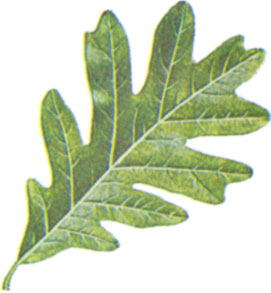
The White Oak is the official state tree of Illinois, Connecticut,
and Maryland. Being the subject of a legend as old as the colony
itself, the Charter Oak of Hartford, Connecticut is one of the most
famous white oaks in America. The tree now makes up the reverse
side of the Connecticut state quarter.
3: Redbud
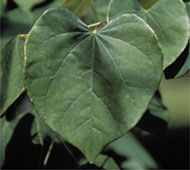
The Redbud tree is a small tree with thick, spreading branches and
often a twisted trunk. Also known as the Judas tree, according to
legend, Judas Iscariot hanged himself from a branch of the European
species Cercis siliquastrum.
4: Sweetgum

The Sweetgum tree is a deciduous tree native to warm temperate
areas of eastern North America. A popular ornamental tree in North
America, it is recognizable from its combination of five-pointed
star-shaped leaves and spiked fruit.
5: Hickory
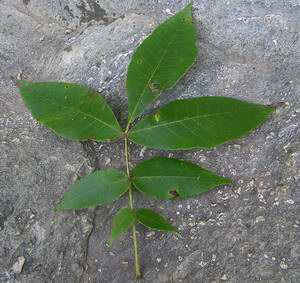
From the U.S. Forestry Service pamphlet on "Important Trees of
Eastern Forests", "there are some woods that are stronger than
hickory and some that are harder, but the combination of strength,
toughness, hardness, and stiffness found in hickory wood is not
found in any other commercial wood." As such, hickory is used for
tool handles, drum sticks, and many other applications where
strength and durability are of concern. Hickory wood is also a
preferred type for smoke curing meats. In the Southern United
States, hickory is popular for cooking barbecue, as hickory grows
abundantly in the region, and adds flavor to the meat.
6: Red Cedar
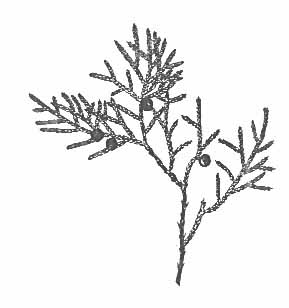
The Red Cedar has reddish-brown, fibrous bark that peels off in
narrow strips. The leaves are tightly adpressed and scale-like on
the adult tree.
7: Red Maple
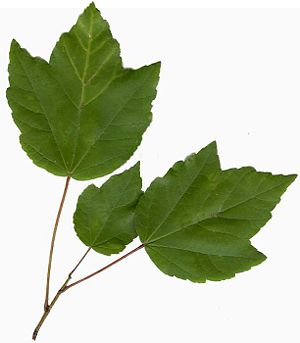
Red Maple, also known as Swamp or Soft Maple, is one of the most
common and widespread deciduous trees of eastern North America. Its
name is due to its brilliant scarlet fall foliage color.
8: Yellow Poplar

The Yellow Poplar (American tulip tree) is one of the largest of
the native trees of the eastern United States, known to reach the
height of 190 feet (58 m), with a trunk 10 feet (3 m) in diameter;
its ordinary height is 70 feet (21 m) to 100 feet (30 m). It
prefers deep, rich, and rather moist soil; it is common, though not
abundant, nor is it solitary. Its roots are fleshy. Growth is
fairly rapid, and the typical form of its head is conical.
9: Red Oak
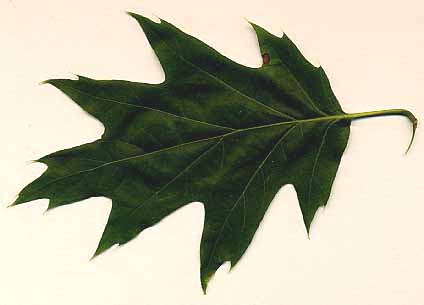
The Red Oak is one of the most important oaks for timber production
in North America with wood of high value.
A final note: I did my best to properly ID all of the trees and
picked six trees that are fairly distinctive from one another,
especially in terms of leaf shape, just in case I wasn't batting
1000. If you notice I misidentified any of the trees, please let me
know and I'll update the cache listing.
Much of the text in the tree identification
guide was taken from wikipedia.
You can double check your result on
Geochecker.com.


Voted NOVAGO's Best Mystery/Puzzle Cache for
2009!